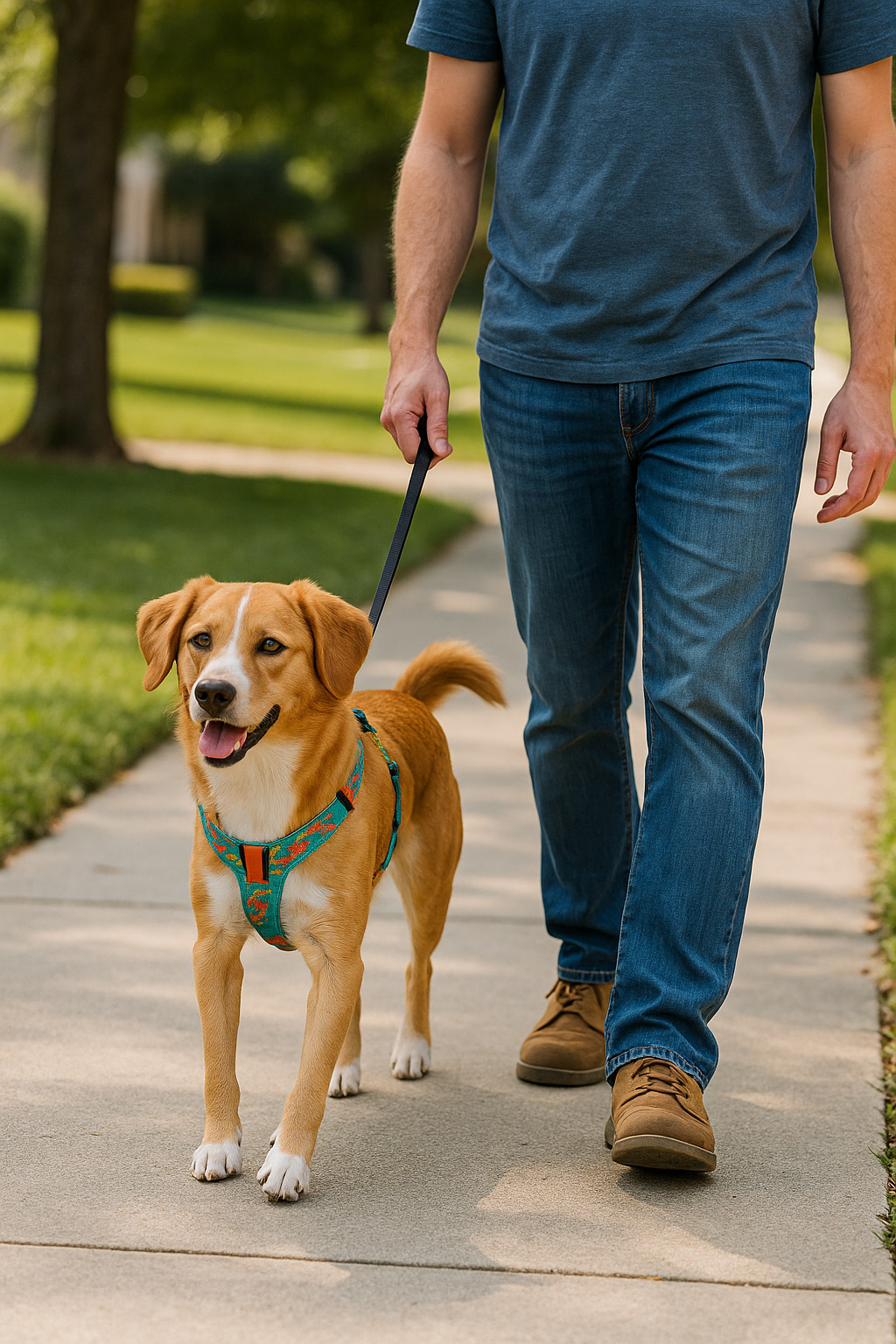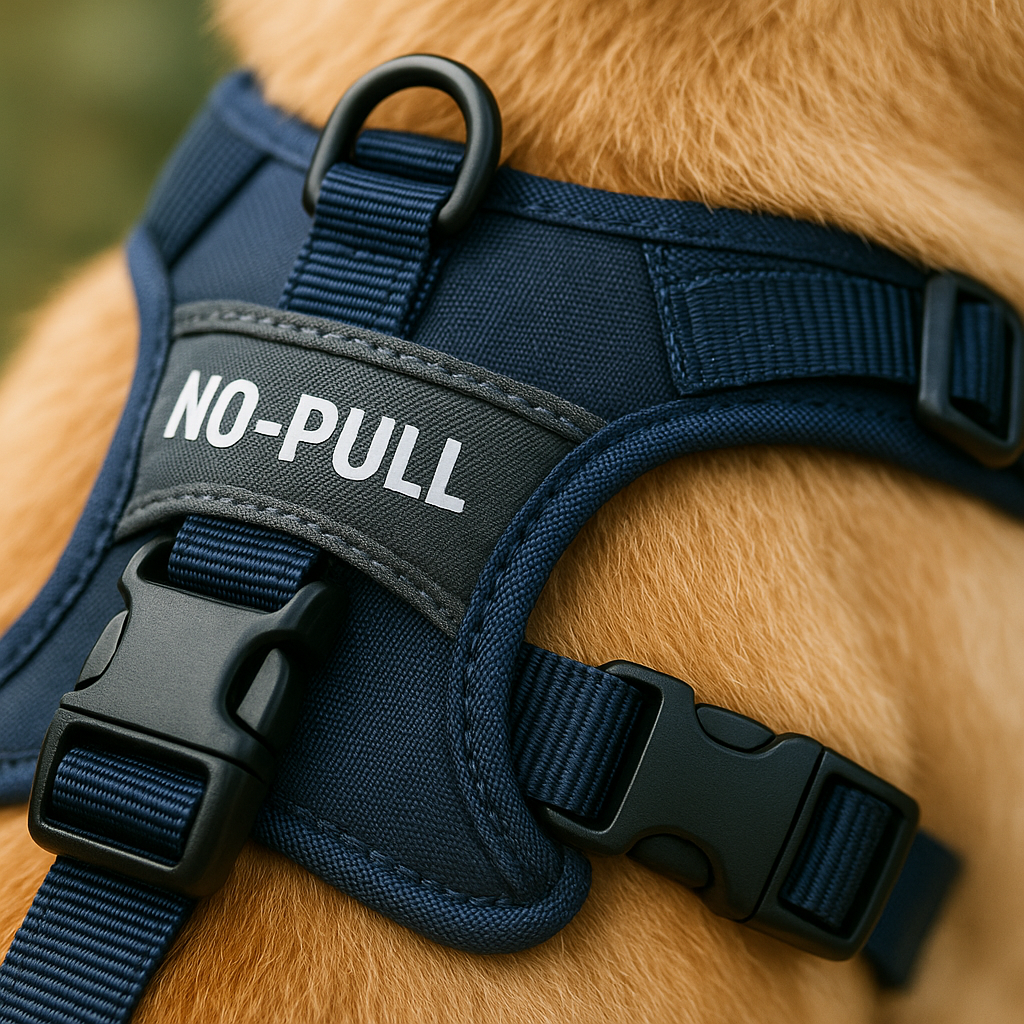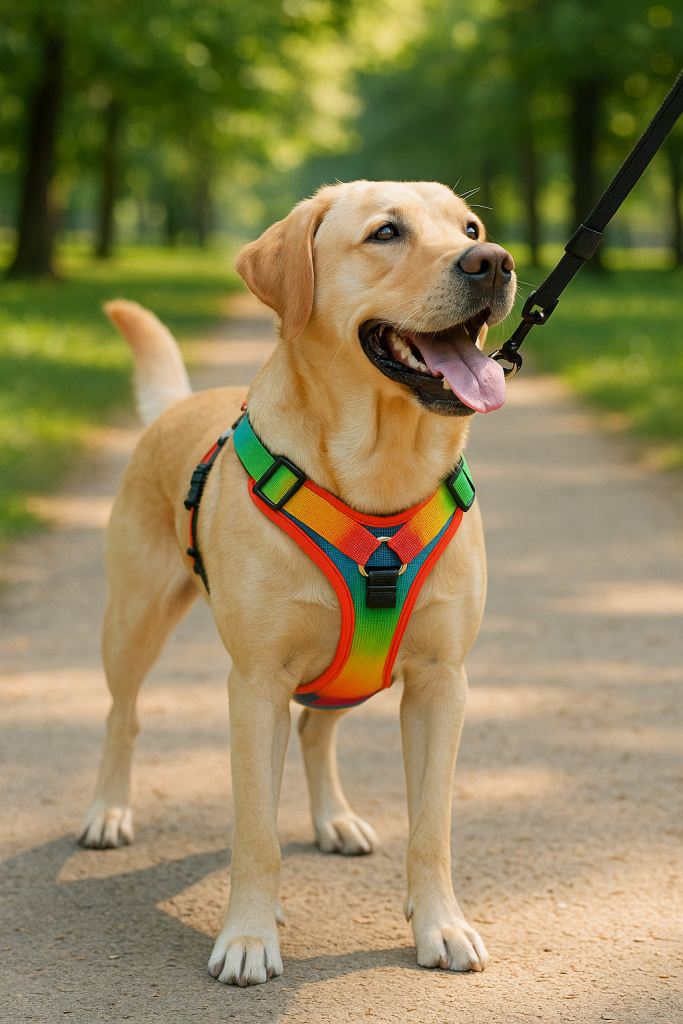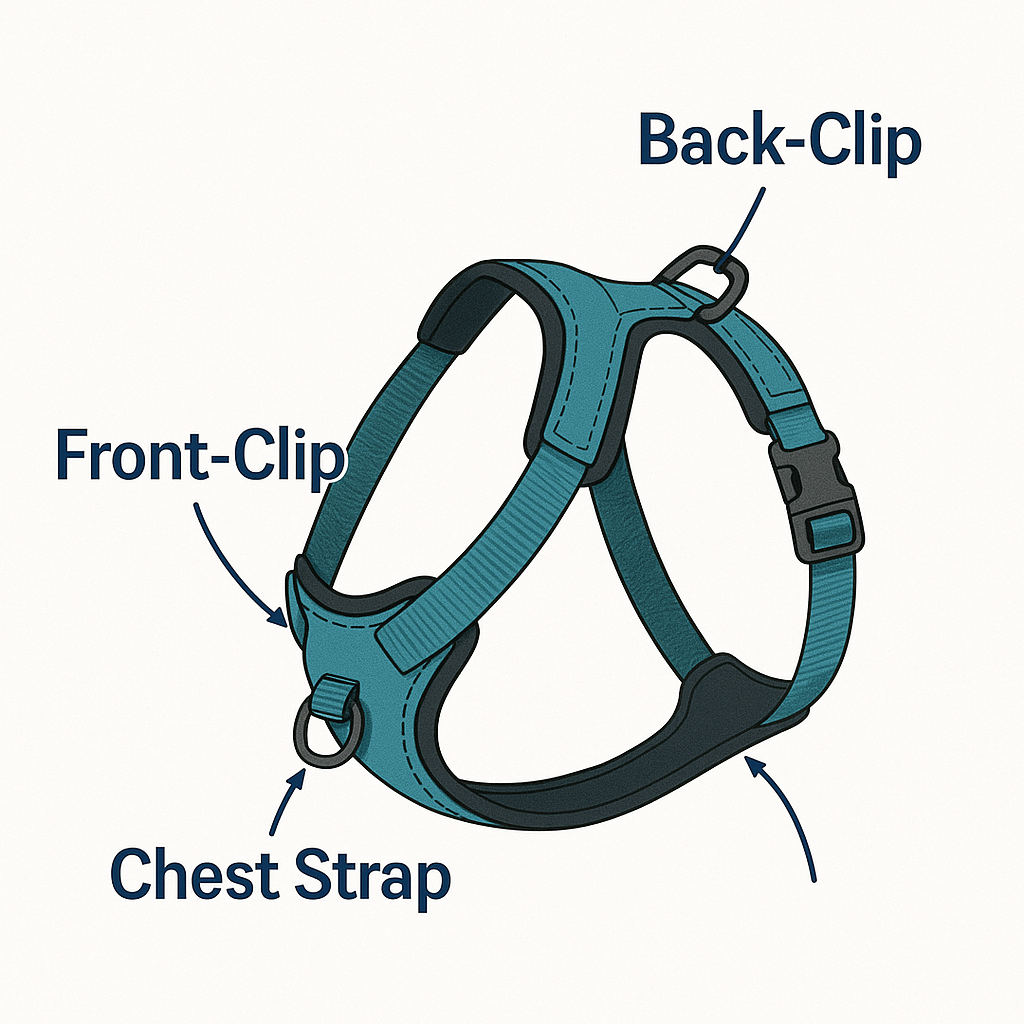Dog Care & Accessories
How to Choose the Right No-Pull Dog Harness (US Guide 2025)
Walking your dog should be relaxing, enjoyable, and safe. But for many dog parents in the United States, the daily walk can turn into a full-body workout — especially if you’re dealing with a strong puller. Whether you’re walking a lively Labrador in Oregon or a high-energy Australian Shepherd in Texas, finding the right no-pull dog harness can dramatically improve comfort, safety, and training effectiveness.
This 2025 US Guide will walk you through everything you need to know — from sizing and fit, to material selection, harness types, and breed-specific needs — so you can confidently pick the best no-pull harness for your pup.
What Is a No-Pull Dog Harness?
A no-pull dog harness is specifically designed to help reduce pulling behaviors during walks. Unlike traditional collars that apply pressure around the throat, a no-pull harness redistributes pressure across the chest and shoulders to steer your dog back toward you.
This makes walks safer, more controlled, and more enjoyable for both dog and owner.
How it works:
-
Uses pressure distribution instead of throat pressure
-
Redirects forward motion sideways
-
Provides more owner control
-
Minimizes coughing, choking, and injury
Traditional collars and even standard harnesses are not always designed to discourage pulling. A no-pull harness, however, provides both management and training support.
Why Choose a No-Pull Harness? (Benefits for US Pet Parents)
1. Improved Safety
Collars can strain the neck, damage the trachea, and contribute to long-term injury.
A no-pull harness spreads force evenly across the chest to avoid airway pressure.
2. More Control
In busy American environments — sidewalks, parks, outdoor malls — strong dogs can be difficult to manage.
A no-pull harness gives you improved steering and stability.
3. Supports Training
By redirecting movement, the dog learns that pulling doesn’t get them forward.
Combined with positive reinforcement, you’ll see better leash manners over time.
4. Comfort for All Sizes
From tiny Chihuahuas to Great Danes, proper harnesses:
-
Prevent rubbing
-
Allow natural movement
-
Reduce overheating
-
Improve comfort on long walks
5. Perfect for American Lifestyles
Whether you hike Colorado trails or stroll San Diego beaches, a no-pull harness is a practical upgrade for active US dog families.

Key Features to Look For
Knowing what to look for when choosing a no-pull harness can prevent poor fit, discomfort, or wasted money.

1. Clip / Attachment Style
| Type | Best For |
|---|---|
| Front-clip | Strong pullers |
| Back-clip | Calm walkers |
| Dual-clip | Maximum flexibility |
If your dog pulls, choose a front-clip or dual-clip harness.
2. Ergonomic Fit
A well-designed harness:
-
Sits low on the chest
-
Avoids pressure on the throat
-
Doesn’t restrict shoulders
3. Material & Durability
Look for:
-
Heavy-duty nylon or polyester
-
Neoprene padding
-
Reinforced stitching
-
Weather resistance
The US has diverse climates — hot, cold, humid — so durability matters.
4. Padding
Soft padding prevents:
-
Rubbing
-
Chafing
-
Fur breakage
-
Skin irritation
5. Adjustability
Choose harnesses with 4–5 adjustment points to ensure secure fit.
6. Visibility / Reflective Strips
Night walks are common across the US, so reflective material increases safety.
7. Handle Support
A top handle helps with:
-
Crowded areas
-
Helping dogs into cars
-
Elderly dog support
8. Breathability
Mesh is ideal for warm states (CA, TX, FL) or fluffy breeds.
Types of No-Pull Harnesses
Front-Clip Harness
The most effective for reducing pulling.
Ideal for training and urban walks.
Dual-Clip Harness
Both front and back rings → versatile.
Best for pet parents who want full training range.
Back-Clip Harness
Best for calm or trained dogs.
Not recommended for strong pullers.
How to Measure & Choose the Right Size
To find the correct size, measure:
-
Chest girth (widest part, behind front legs)
-
Neck circumference
Compare your measurements with the manufacturer’s size chart.
Fit test:
-
The harness shouldn’t choke
-
You should fit two fingers under each strap
-
It shouldn’t slide sideways
US Dog Breed Size Examples
| Breed | Typical Size |
|---|---|
| Chihuahua | XS |
| Corgi | S–M |
| Border Collie | M |
| Golden Retriever | L |
| German Shepherd | L–XL |
| Great Dane | XXL |
Every dog is unique — measure for best accuracy.
Best Materials for US Conditions
| Material | Ideal For |
|---|---|
| Nylon | Everyday walking |
| Polyester | Lightweight |
| Neoprene | Padding |
| Mesh | Hot weather |
Avoid cheap plastics and thin straps, which wear quickly.
Breed-Specific Recommendations
High-Energy Breeds
-
Husky
-
Malinois
-
Border Collie
Recommend: dual-clip + strong padding.
Short-Snout Breeds
-
French Bulldog
-
Pug
Recommend: front-clip to avoid airway pressure.
Large & Giant Breeds
-
Mastiff
-
Great Dane
Recommend: reinforced seams + top handle.
Puppies
Choose adjustable harnesses that grow with them.
No-Pull Harness vs Collar vs Regular Harness
| Feature | No-Pull Harness | Collar | Standard Harness |
|---|---|---|---|
| Pull Control | Excellent | Poor | Moderate |
| Neck Safety | Excellent | Poor | Good |
| Best For | Pullers, training | Calm dogs | Everyday |
If your dog pulls — a no-pull harness is the best choice.
How to Fit a No-Pull Harness Correctly
Steps:
-
Loosen straps first
-
Place harness over or around chest
-
Adjust neck area
-
Adjust belly/girth strap
-
Ensure two-finger gap
-
Attach leash to front clip
-
Test by walking a few steps indoors
A poorly fitted harness reduces effectiveness and may cause discomfort.
Training with a No-Pull Harness
A harness is not a magic fix — it’s a tool to help improve walking behavior.
Tips:
-
Reward calm walking
-
Change direction if pulling continues
-
Keep initial sessions short
-
Use treats + praise
Most dogs show improvement within days to weeks.

Common Mistakes to Avoid
-
Choosing wrong size
-
Not adjusting straps
-
Using back clip for strong pullers
-
Buying cheap / unpadded harnesses
-
Leaving harness on all day
When to Replace a Harness
Replace if:
-
Straps are frayed
-
Plastic buckles weaken
-
Dog outgrows size
-
Padding flattens
-
Metal hardware rusts
Recommended Harness Features for 2025
A great no-pull harness should offer:
-
Dual-clip options
-
Breathable mesh
-
Neoprene padding
-
Reflective stitching
-
Multi-point adjustability
-
Reinforced hardware
-
Top handle
FAQs
1. Is a no-pull harness better than a collar?
Yes. It protects the neck and improves control.
2. Will it stop pulling immediately?
Not always — but it reduces pulling and supports training.
3. Can puppies use no-pull harnesses?
Yes — just choose adjustable models.
4. Can my dog wear it all day?
No. Use only for walks.
5. Is it good for hiking?
Yes — just choose padded, breathable harnesses with a handle.
Conclusion
The right no-pull dog harness can transform your daily walks. It enhances safety, improves training, and builds a better bond between you and your pup.
To choose the best harness in 2025:
-
Measure accurately
-
Choose ergonomic design
-
Look for dual-clip + padding
-
Prioritize reflective materials
-
Consider breed + activity level
A quality harness makes life easier whether you’re exploring New York neighborhoods or hiking mountain trails in Colorado.
If you’re ready to improve your walking experience, explore today’s best no-pull harness options designed for US dogs.


